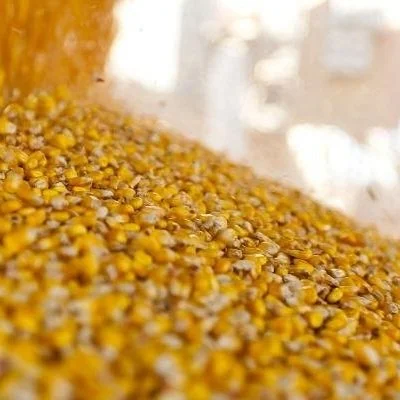The U.S. Department of Agriculture announced the appointment of four new farmer-leaders to serve on the United Soybean Board (USB). In addition, 15 farmer-leaders were reappointed. In total, 22 leaders and alternates will serve three-year terms and one alternate will serve a two-year term. These USB Directors from 18 states will be sworn in for service during the USB December Meeting in St. Charles, Mo.
Read MoreWith the U.S. harvest concluding, markets will focus on South American weather forecasts and crop progress. For the 2023/24 marketing year, Brazil and Argentina are projected to account for 53% of global soybean production and 15% of global corn production. By comparison, the U.S. produces 32% of the world’s corn and 28% of the world’s soybeans.
Read MoreIf you see handfuls of soybeans scattered about the field as you harvest they might not look like much, but small numbers can add up to huge losses quickly.
Read More“When is the best time to spray fungicides?” is a question that is central to managing many plant diseases. A good answer, however, is rarely simple and several factors, from the economics of fungicide applications to the biology of the pathogen, need to be considered.
Read MoreThis month’s 2023/24 U.S. corn outlook is for reduced supplies, lower feed and residual use and exports, and smaller ending stocks. Corn production is forecast at 15.064 billion bushels, down 70 million on a cut in yield to 173.0 bushels per acre. Corn supplies are forecast at 16.451 billion bushels, a decline of 160 million bushels from last month, with lower production and beginning stocks.
Read MoreA controversial proposal to build a grain elevator in St. John the Baptist Parish faces a key test on Monday, when the planning commission takes up a zoning change that has been entangled in court disputes and community opposition to the project.
The parish has applied for the property owned by Greenfield, a grain export company, to be rezoned from residential to industrial land.
Read MoreCorn and soybean production is down from September 2023, according to the Crop Production report issued today by USDA’s National Agricultural Statistics Service (NASS). Corn production is forecast at 15.1 billion bushels, down less than 1% from the previous forecast but up 10% from last year; soybean growers are expected to decrease their production 4% from 2022, forecast at 4.10 billion bushels.
Read MoreAs consumers continue to be conscientious about their food choices, a new survey from the United Soybean Board reveals valuable insights into consumer preferences and purchasing attitudes for animal protein, particularly pork products. According to the survey, 70% of respondents say that animal diet is extremely or very important to them when purchasing meat, up from 51% in 2019.
Read MoreThe growth of soybean plants consists of vegetative and reproductive stages. The vegetative stages begin with emergence and are described by the development of the cotyledons and leaves. The reproductive stages begin with the onset of flowering and are described by the development of the flowers, pods and seeds.
Read MoreSelecting the most adapted and high yielding varieties is one of the most important decisions a soybean producer makes every year. The LSU AgCenter conducts an Official Variety Trial (OVT) and Core-block demonstration plots to provide unbiased data to assist in variety selection. The OVT and core-block demonstrations are planted throughout the state to collect performance data in different environments.
Read MoreThis month’s 2023/24 U.S. corn outlook projects slightly larger supplies and ending stocks. Projected beginning stocks for 2023/24 have been lowered by 5 million bushels mostly due to offsetting trade and corn used for ethanol changes for 2022/23. Corn production for 2023/24 is forecast at 15.1 billion bushels, this a 23-million-bushel increase from last month’s estimates as greater harvested area more than offsets reductions in yield.
Read MoreIt’s game time says Soy Transportation Coalition executive director Mike Steenhoek, and key waterway infrastructure systems are not ready.
“There's a couple times a year where it's game time more than others, and harvest season is one of those periods and you need to have our supply chain operating on all cylinders,” Steenhoek says.
Read MoreWith nearly 50 percent of soybean harvest complete, many farmers are hoping for a good crop this year to help cover their losses from last year.
This harvest season, farmers faced hot and dry weather, while last year’s story was the other extreme with heavy rainfall. Roy Eley, a Franklin Parish grain farmer is among those who really needed a better crop this year.
Read MoreLouisiana corn for grain production is forecast at 119 million bushels, up 25 percent from the August 1 forecast and up 61 percent from 2022. Based on conditions as of September 1, yield is expected to average 175 bushels per acre, up 6 bushels from last month and up 5 bushels from last year. Planted acreage is revised to 700,000 acres, up 120,000 acres from June 2023. Harvested acreage for grain is revised from 565,000 to 680,000 acres.
Read MoreIntroducing a change in agronomic practices can be compared to pressing the reset button on a computer or router. The practice change requires the soil system to restart before it establishes a new normal.
“We don’t know what that reset will look like, but with conservation practices, it often results in a crop yield hit as the soil microbes adjust,” explains Lisa Fultz, associate professor and soil microbiologist with Louisiana State University AgCenter.
Read More













